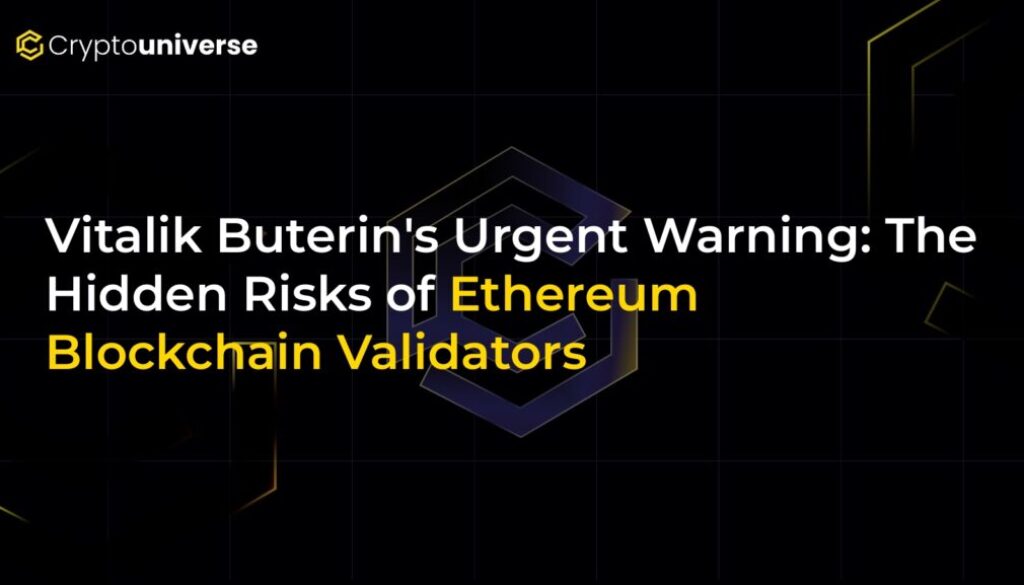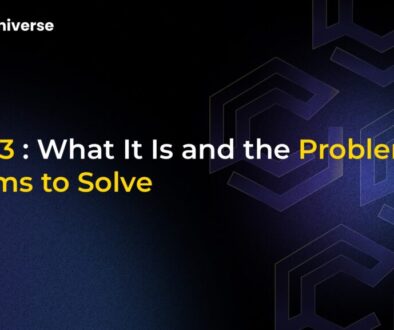Vitalik Buterin’s Urgent Warning: The Hidden Risks of Ethereum Blockchain Validators

The Unspoken Line in the Sand: Vitalik Buterin on Ethereum’s True Security Limits
When Ethereum co-founder Vitalik Buterin speaks, the crypto world listens. In a recent, rare warning, Buterin drew a critical line in the sand, clarifying a common misconception about the power of blockchain validators and the absolute limits of cryptographic security. His message is simple but profound: Ethereum’s mathematical guarantees end where trust in external systems begins.
This isn’t about a flaw in Ethereum’s code. Instead, it’s a crucial reminder for developers and users about the risks that emerge as blockchains become more interconnected with the outside world. Let’s break down what this warning means and why it’s sparking a vital debate across the ecosystem.
Math vs. Trust: The Core of Buterin’s Argument
At the heart of Buterin’s caution is the difference between what is enforced by the blockchain’s protocol and what is decided by its validators.
He explained that even a dreaded 51% attack—where a single entity or colluding group controls a majority of the network’s validators—cannot force an invalid transaction. For example, they can’t create ETH out of thin air or steal funds directly from your wallet by forging a transaction. Why?
Because every full node on the Ethereum network independently verifies every new block against the protocol’s rules. If a block contains a transaction that breaks these rules (like spending someone else’s money), nodes will automatically reject it. This decentralized verification is Ethereum’s core strength, a fortress protected by pure mathematics.
However, Buterin emphasized that this fortress has a perimeter. The moment we ask validators to do more than just secure the blockchain’s internal state, we step outside this protected zone. When we rely on them to verify real-world data, confirm events on other chains, or report off-chain information, we are no longer relying on math. We are relying on trust.
In this realm of trust, if 51% of validators agree to lie about an external fact—say, confirming a deposit on a bridge that never happened—the Ethereum protocol itself has no way of knowing it’s a lie. The cryptographic security can’t help, and there is no built-in recourse.
The Danger Zone: Bridges, Oracles, and Off-Chain Data
Buterin’s warning directly targets the increasingly complex systems being built on top of Layer 1 blockchains. These systems often depend on validators acting as trusted intermediaries:
- Blockchain Bridges: These allow you to move assets from one chain to another (e.g., from Ethereum to Polygon). They often rely on a set of validators to confirm that assets were locked on the source chain before issuing new ones on the destination chain. A malicious majority could falsely attest to a deposit and steal funds.
- Oracles: These are services that feed external, real-world data (like the price of a stock or the result of a sports game) onto the blockchain. DeFi protocols heavily rely on oracles. If validators who also operate an oracle collude to report a false price, they could trigger liquidations and manipulate markets.
- Off-Chain Attestations: This involves validators confirming any event that happens outside the blockchain, which could range from identity verification to supply chain tracking.
A Heated Debate: How Deep Does the Rabbit Hole Go?
Buterin’s remarks have reignited a critical conversation among blockchain developers, with several prominent figures weighing in.
The Practical Threats: MEV and Censorship
Mudit Gupta, CTO of Polygon, agreed with the core warning but added that the risks are already present even within the protocol’s boundaries. While validators can’t forge transactions, he noted they can still “steal money” through Maximal Extractable Value (MEV)—reordering or inserting transactions for profit—or by enforcing censorship and refusing to include certain transactions in a block.
The Structural Vulnerabilities
Seun Lanlege, co-founder of Polkadot’s Hyperbridge, argued that the problem is even more fundamental. He warned that a malicious majority of
The Purist’s Solution: Keep Everything On-Chain
Offering a different perspective, MultiversX core developer Robert Sasu proposed a more radical solution: minimize reliance on off-chain components entirely. “Make and move everything onchain. Directly in a decentralised L1,” he stated. Sasu’s view is that any dependence on external systems like bridges or price feeds is an invitation for manipulation. True decentralization and security, he argues, can only be achieved by building systems that are fully self-contained on the blockchain, without trusted intermediaries.
Why This Matters for Every Crypto User
This may seem like a high-level technical debate, but it has direct implications for anyone using DeFi, NFTs, or any dApp. When you use a bridge to move your assets or a lending protocol that relies on a price oracle, you are implicitly trusting the validators or operators of that service.
Vitalik Buterin’s warning is a call for greater awareness. It urges us to ask critical questions: Who are we trusting? What are the security assumptions of the dApps we use? And what happens if that trust is broken?
As the blockchain ecosystem evolves, the line between mathematical certainty and human trust will continue to be a battleground. Understanding where that line is drawn is the first step toward navigating this exciting but complex landscape safely.


